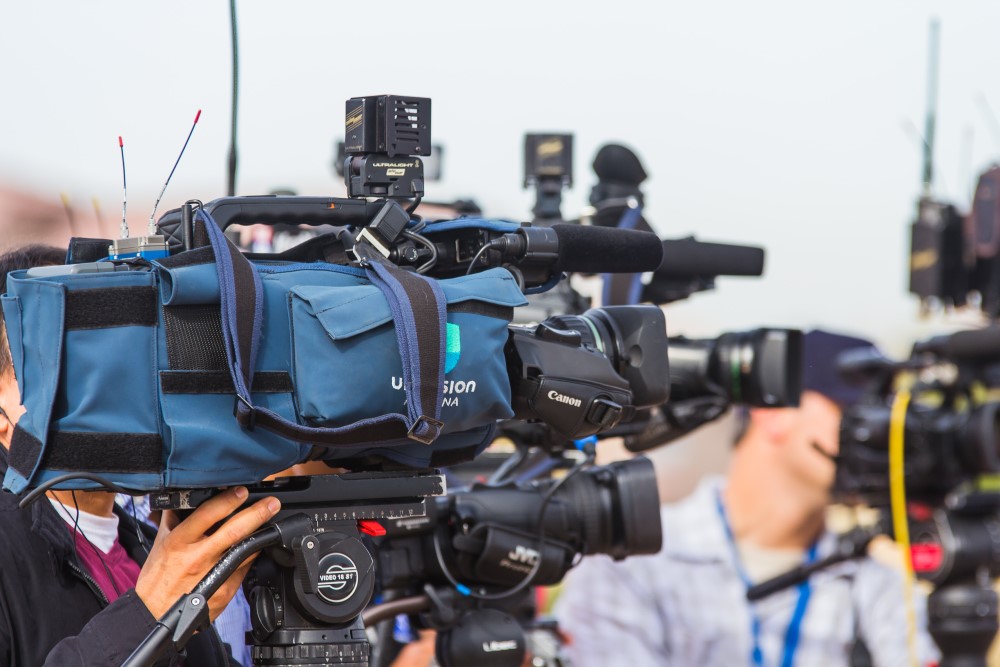The magic number

By Simon Perez
RTDNA Contributor
Go ahead, admit it. Lots of us got into journalism because we weren’t so good at math. But that doesn’t mean numbers don’t count. We need them to understand tax rates and calculate percentages and convert Celsius to Fahrenheit. Beyond crunching the numbers for facts to include in our stories, there’s a numerical aspect to how we tell our stories. And thankfully, for those of us who are mathematically challenged, the equation is pretty simple. Just remember one number: 3, as in The Rule of Three.
The Rule of Three can help your broadcast stories in three ways, by making them:
- More memorable
- Easier to understand
- Visually more appealing
More memorable
Telling stories with the Rule of Three in mind helps viewers remember what they’ve just heard – see here, here and here. Think about some of the simple phrases that roll off your tongue years after you first heard them:
- Columbus’ three ships – The Nina, the Pinta and the Santa Maria
- Benjamin Franklin's advice: “Early to bed and early to rise makes a man healthy, wealthy and wise”
- And sing along with the Jackson 5: “ABC, it’s as easy as….”
Wouldn’t it be great if viewers could remember and recite our stories years, even decades, after they’d first heard them?
Easier to understand
Including the Rule of Three in your broadcast writing can help make your story not only more memorable, but also more easily understood. A common mistake beginning reporters make in their live presentations is cramming in too much information. We’ve all heard the live TV reporter drone on and on; there comes a moment when the viewers are overwhelmed and they simply cannot follow along any longer.
Think of a live shot as a reporter tossing tennis balls to a viewer. Each ball is a piece of information. Throw a couple dozen balls and the viewer is sure to drop some (doesn’t understand). Throw just three, nice and easy, and the viewer can focus upon and catch each one (understands). Three is a good number of bullet points to write in your reporter’s notebook. Stick to only those three points and you’re more likely to communicate clearly in your live presentations.
Better Videography
Today’s reporters aren’t just writers, they’re also videographers – and the Rule of Three applies here, too. Elementary videography lessons explain how to frame shots. Shoot so the image is divided into a box that's 3 x 3. It just feels better that way.
Beyond that crucial, but basic, element, when it comes time to edit, lots of beginning videographers wish they had a greater variety of shots. Rarely do they say, “Darn it, 80 percent of my b-roll is medium shots and that doesn’t seem like enough.” A good rule of thumb to follow when shooting b-roll incorporates the Rule of Three: shoot wide-medium-tight. No matter what you shoot, get three shots of it: a wide, a medium and a tight. And, because tight shots are the ones that really take the viewers to the scene, get three of your tight shots. Think of it as the Rule of Three x 2: shoot wide-medium-tight-tight-tight.
Of course, the Rule of Three isn’t a panacea – it can’t help poor grammar or fuzzy focus. But, if beginning reporters are looking for a way to move beyond the basics and to add some professional polish to their stories, as ironic as it sounds, a little math can help.
Simon Perez is an associate professor of broadcast and digital journalism at Syracuse University's S.I. Newhouse School of Public Communications. In the summers of 2012, 2014, 2015, 2016 and 2017 he returned to his former job as reporter for KPIX TV in San Francisco. He has chronicled his newsroom experiences and the lessons he hopes to bring back to the classroom at http://www.simonperez.com/blog.
